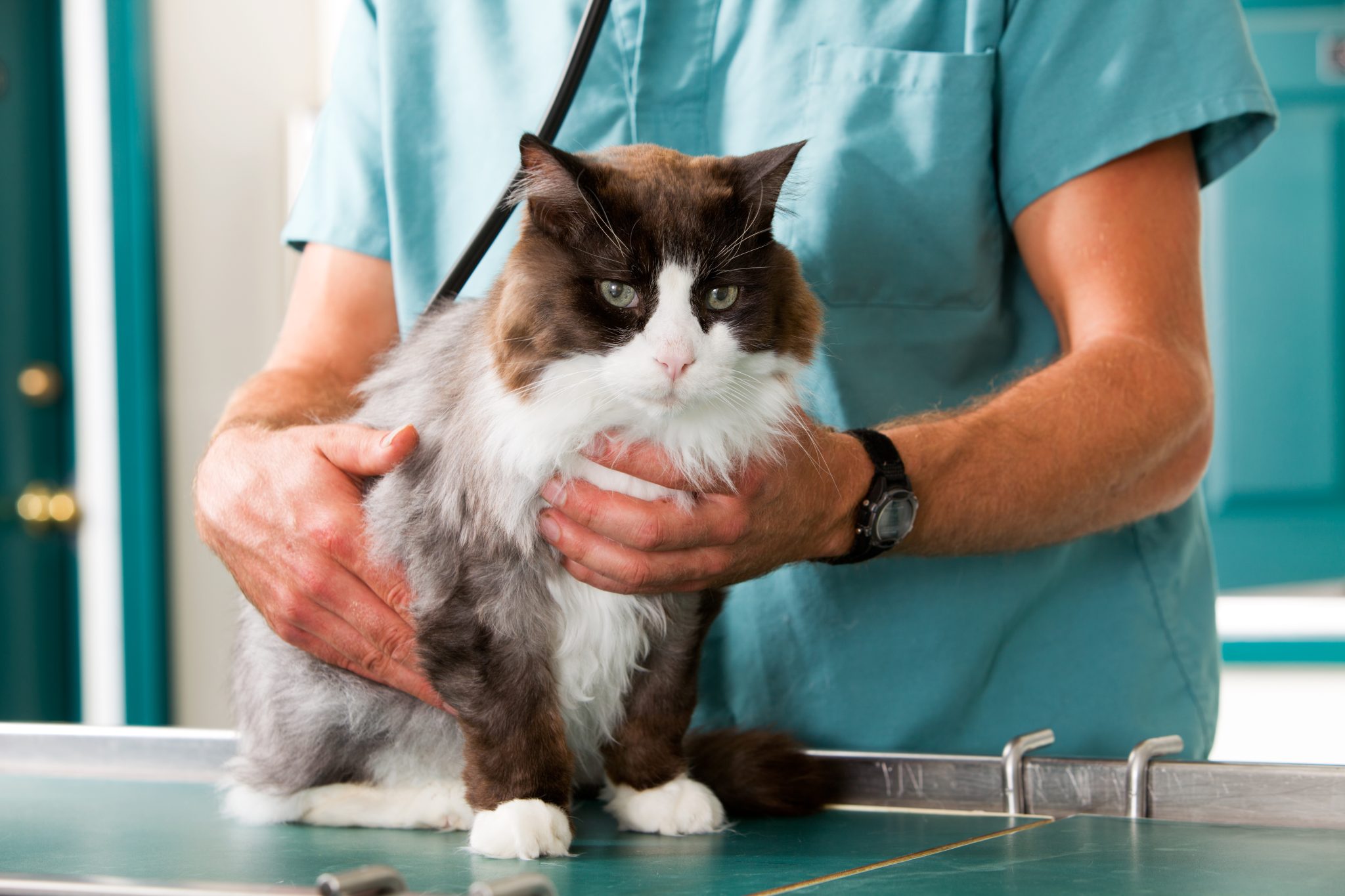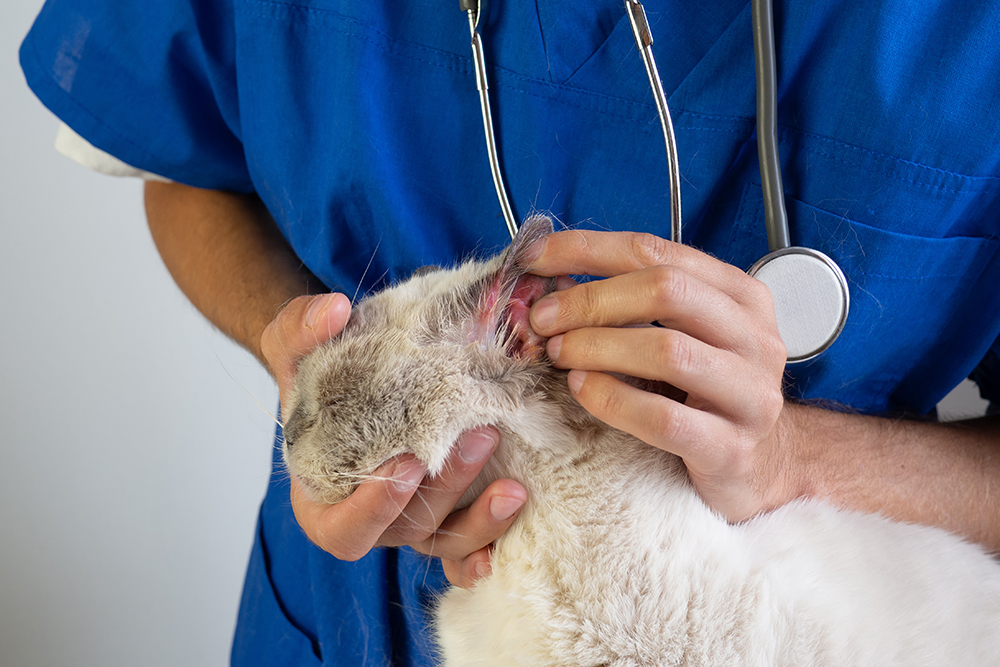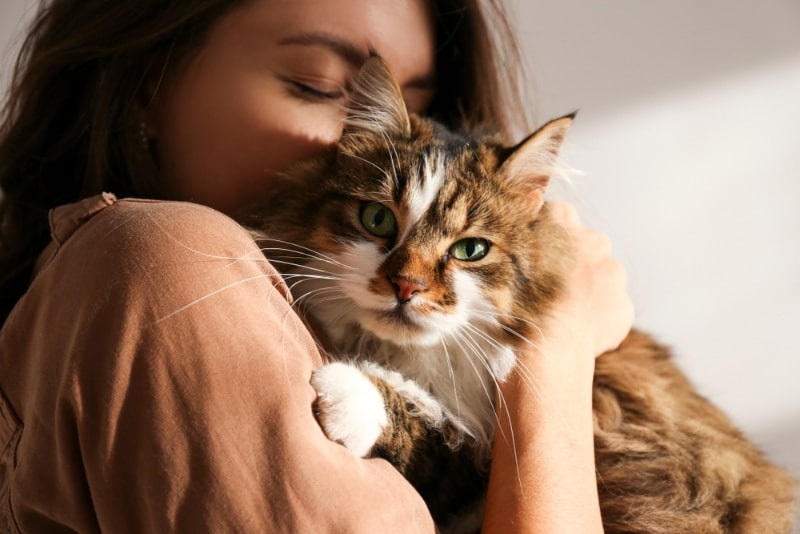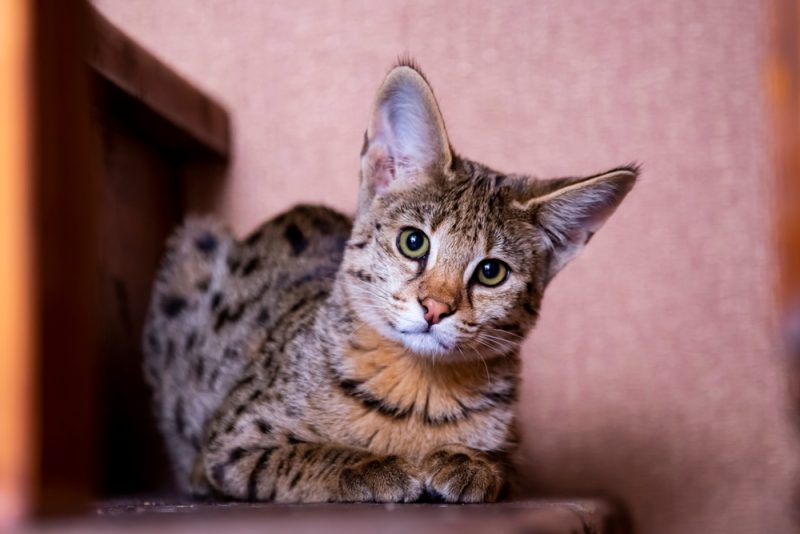It’s really scary when our pets become ill, particularly when they’re not acting like their normal selves. Often, one of the first signs that there’s something wrong with our cat is that they seem quiet, lethargic, or try to hide. These sorts of signs can occur with many different issues, from a fever to something more serious. But what if their personality changes, or they have difficulty walking, or even start having seizures? These can be signs of a neurological problem and need immediate veterinary attention.
There are several causes of neurological disease in cats: infection, trauma, congenital problems, and cancer, to name a few. Let’s take a closer look at the neurological disorders that affect cats to learn what signs to watch out for, and how these disorders can be treated.
If you need to speak with a vet but can't get to one, head over to PangoVet. It's an online service where you can talk to a vet online and get the advice you need for your pet — all at an affordable price!


Understanding Feline Neurological Disease

As we know, the nervous system is extremely complex and is responsible for controlling every other aspect of biological function, from basic reflexes, movement and coordination, hormones, digestion, breathing, thinking—everything! So, when something goes wrong with this system, the results can be catastrophic.
Because there are so many different ways that a neurological disorder can present, a thorough history is vital, including what sort of signs you have noticed, how long they’ve been going on, and any other changes that have been seen. The location, type, and duration of clinical signs can give us a huge amount of information.
- HOW the neurological system is being damaged can dictate what sort of signs we may see. For example, an infection may produce other clinical signs alongside those caused by the neurological disorder, such as discharge from the eyes, nose, or ears, whereas a condition such as epilepsy will only result in seizures.
- WHERE in the body the problem is will determine what effects it will have. For example, an injury or tumor in the spine may cause weakness, incoordination, or paralysis in the limbs, but not affect brain function, whereas a problem in the brain can have an effect on any or all bodily functions.
- Knowing WHEN the clinical signs started will help give us an idea of what sort of illness or disorder we are dealing with. For example, a cat with a congenital neurological disorder is likely to have been showing from a young age or since birth. Neurological changes due to infection may take days to weeks to appear, whereas signs caused by a tumor or age will tend to affect older cats, with signs appearing over weeks or months.

What Are the Most Common Forms of Neurological Disorders in Cats?
Now that we have a better understanding of how to approach neurological disease, let’s take a look at some examples of disorders in cats.
1. Feline Infectious Peritonitis (FIP)
You might be wondering how peritonitis fits into neurological disorders, and it is a misleading label. FIP is a viral infection caused by a strain of Feline Coronavirus, a family of viruses that cause a number of respiratory and gastrointestinal diseases in humans, including COVID-19, SARS, and MERS.
Feline coronavirus is relatively common amongst cats, particularly those living in high-density feline populations or multi-cat households. It is shed in the feces and easily picked up by other cats in a shared environment, and in the majority of cases, is asymptomatic. If a cat becomes unwell or immunocompromised, is infected by another virus (such as feline leukemia virus), or is generally in poor health and condition, the virus can mutate into an active form which, in almost all cases, is fatal.
The most common presentation of FIP in cats is one that produces fluid buildup in the body (effusion), particularly within the peritoneal cavity, or abdomen. This is also referred to as “wet” FIP, due to the effusions it causes. The second form creates little or no effusion, so is referred to as “dry” FIP, although both forms can occur simultaneously.
Dry FIP can affect numerous organ systems, most notably, the eyes and nervous system. The virus may cause painful inflammation, infection, and bleeding in the eyes. As it reaches the brain, this inflammation will cause depression, personality changes, seizures, ataxia (wobbly, unstable walking), coma, and death.
Most cases of active FIP are seen in cats under the age of 2 years old; however, the virus can remain dormant for years and be activated at any age. Clinical signs of the virus tend to progress rapidly, over the course of days/weeks.
Until as recently as 2022, FIP was invariably fatal. In the wake of Covid-19, the drug Remdesivir, has shown promising results in the effective treatment of feline coronavirus. However, price and availability are limiting its use in veterinary practice. Remdesivir is currently only available in Australia and the United Kingdom, with the average price of a treatment course being around £5,000 (US $6,250).
There is an FIP vaccine available in the US, but its effectiveness has not been proven, and its use is not recommended by the American Association of Feline Practitioners Feline Vaccine Advisory Panel.
Although it is virtually impossible to completely prevent infection with feline coronavirus, the most effective strategy against FIP is optimizing your cat’s immune system by feeding them a high-quality diet, keeping up to date with routine vaccination and parasite treatment, and maintaining good litter box hygiene.
2. Otitis

Ear infections can sometimes trigger reactions that look like neurological signs, but they can also cause true neurological disorders. If a cat has an infection to the outer part of the ear (otitis externa), they may tilt their head because of the pain and inflammation in the ear, but this is not a neurological head tilt.
If infection reaches the middle ear (otitis media) or inner ear (otitis interna), inflammation of the facial nerves, causes Horner’s Syndrome or disruption of the vestibular system. Signs of vestibular disease include ataxia, circling, head tilt, and a rapid flickering of the eyes, called nystagmus.
In severe cases, infection and inflammation can travel up the nerves toward the brain, which can cause more severe neurological signs like depression, behavioral changes, and seizures.
Neurological signs associated with otitis can appear over a matter of hours but will usually be preceded by signs of discomfort and irritation of the ear. Cats that have had repeated episodes of otitis externa are at a greater risk of developing otitis media or interna, as are cats that suffer from ear polyps.
Treatment of otitis may involve ear drops, oral antibiotics, and steroids. Your vet will likely take swabs of the infection for culture and sensitivity to ensure the right antibiotics are selected, and cases that do not respond to conservative treatment may need CT scans to further diagnose and treat the problem.
In most cases, the prognosis is favorable, provided that there is no permanent damage to the nerves.
3. Neoplasia (Cancer)
Brain and spinal cord tumors are, fortunately, not common in cats, and rarely seen in cats younger than 10 years old. The clinical signs produced by tumors affecting the brain and spinal cord will depend very much on where the tumor is located, the type of tumor, and how quickly it is growing.
Some tumors are benign, meaning that they may be growing for a long time (months to years) before any clinical signs are seen, whereas malignant tumors will invade other tissues. Malignant tumors in other parts of the body may also spread (metastasize) to the brain.
One of the most common clinical signs of brain tumors is seizures, with changes in personality, lethargy, depression, ataxia, head tilt, nystagmus, and inappetence also being common signs.
Tumors located in the spinal cord will most often result in weakness, tremors, or paralysis of limbs, and may also cause urinary or fecal incontinence.
Options for the treatment of brain or spinal tumors in cats are often limited, not only by the anatomy involved but the cost and side effects of that treatment. Depending on the type and location of the tumor, treatment may involve surgery, radiation therapy, or medical management of clinical signs, particularly where seizures are involved. Prognosis is therefore quite guarded.
In most cases, the prognosis is favorable, provided that there is no permanent damage to the nerves.
4. Epilepsy/Seizures

- Genetic/idiopathic seizures (AKA epilepsy)
- Secondary (structural) seizures: caused by brain tumors, diseases directly affecting brain tissue (intracranial disease).
- Reactive seizures: caused by inflammation, toxins, fever, etc. outside the brain (extracranial disease).
Epilepsy first appears in cats younger than 7 years old, and the cat is completely normal in between seizures. It is quite common for cats with epilepsy to have periods of several months between seizures, but the frequency tends to increase over time. Compared with dogs, cats are more likely to suffer from partial (focal) seizures, where parts of the body may exhibit seizure activity, without a loss of consciousness.
Accurate diagnosis of epilepsy requires a range of diagnostic tests to rule out extracranial and intracranial causes of seizures, such as bloodwork, ultrasound, and CT scans. It is not uncommon for epilepsy to be excluded as a diagnosis if the seizures emerge after the age of 10–12 years old, or are accompanied by any other neurological signs.
In the case of secondary or reactive seizures, treatment (and success of treatment) will depend on the underlying cause. The treatment of feline epilepsy will usually involve the use of anti-epileptic medication but may not be initiated unless/until the seizures are frequent and/or severe. The prognosis for cats with epilepsy is dependent on their response to therapeutic treatment.
5. Cerebellar Hypoplasia
Although there are a large number of congenital neurological disorders in cats, cerebellar hypoplasia is the most common one that may allow long-term survival. Sometimes referred to as “wobbly” or “clumsy,” kittens with cerebellar hypoplasia are affected from birth, with clinical signs becoming more noticeable as the kitten becomes more active.
If a female cat is infected with the Panleukopenia Virus (also known as feline distemper virus) during pregnancy, the virus can stunt the development of the cerebellum in the unborn kitten. The cerebellum is responsible for coordinating motor function with brain function, so cats with cerebellar hypoplasia will have varying levels of ataxia, incoordination, and balance problems, depending on the extent of the disorder.
There is no treatment for the condition, and in many cases, the kittens are euthanized on humane grounds. However, with patience, perseverance, and support, it is possible for some kittens to overcome this dysfunction and enjoy a good quality of life.
6. Trauma

Road traffic accidents are the most common cause of trauma-induced neurological dysfunction. The clinical signs seen will depend on the type, location, and severity of the injury sustained and may be permanent or temporary.
- Pelvic/spinal injuries
- Tail pull injuries
- Head trauma
7. Feline Cognitive Dysfunction Syndrome (CDS)
Also known as feline senile dementia, CDS is relatively common in geriatric cats. It presents in many different ways, including minor personality changes, inappropriate toileting, new/changed habits, or “vacant” behavior.
As many of these signs can also be linked to common geriatric problems, such as renal disease, cystitis, hyperthyroidism, or arthritis, it is vital to bring your cat in for a health check before dismissing any of these changes as just “old age.”
Treatment for CDS is limited, just as it sadly is for humans. However, there are several supplements and medical treatments available to help improve cognitive function in cats, so talk to your vet if you think your elderly cat might need a helping hand in their twilight years.
If you need to speak with a vet but can't get to one, head over to PangoVet. It's an online service where you can talk to a vet online and get the advice you need for your pet — all at an affordable price!


Conclusion
As you can see, neurological disorders in cats are just about as numerous and complex as the nervous system itself. Being an integral part of all bodily functions, any damage, disease, or dysfunction of the neurological system can have effects anywhere in the body.
Cats are incredibly resilient creatures, which is why they are often said to have nine lives. However, they are still susceptible to infection, damage, and disease, and even minor problems can become catastrophic once the nervous system becomes involved.
If you notice any changes in your cat’s behavior, personality, movements, or posture, do not hesitate to get in touch with your veterinarian.
Featured Image Credit: Official, Shutterstock


















